Mystery Babylon
Revelation 17:1–7
Lying silently in the shifting sands of time, Babylon is destined to rise from the ashes of the past to play a major role in end-time events. The name Babylon brings to mind incredible images of a wicked city-state with an abominable religious system. This wicked religious system will once again sweep across the world corrupting everything it touches—religiously, politically, and economically.
In chapters 17 and 18, John has outlined the rise and fall of Babylon during the Tribulation period. Events in these chapters represent an ecclesiastical, political, and commercial Babylonian system whose doom was prophesied earlier (14:8; 16:19). The events in chapter 17 do not chronologically follow the bowl judgments. They begin at the inception of Daniel’s 70th week and will be fulfilled by the midpoint of the Tribulation. In chapter 18, Babylon is described as a powerful city with a prosperous commercial center that will be suddenly destroyed at the end of the Tribulation (18:10, 16, 19). Some scholars believe that the name Babylon in chapter 18 is to be interpreted symbolically, referring to Rome. Others believe that the city refers to a rebuilt Babylon. More will be said about this in chapter 18.
Announcing the Harlot
Because Babylon did not exist in John’s day, the announcement of its destruction must have perplexed the apostle. Further revelation is provided by one of the seven angels who poured out the bowl judgments. The angel invites John to witness the judgment of Babylon, described as a “great harlot” (v. 1). The word harlot (Gr., porneia) means fornication, adultery, or prostitution and refers to Babylon’s abominable religious idolatry (cp. Jer. 23:17). Its perverted paganism is the epitome of spiritual idolatry, and it will reach its peak during the first half of the Tribulation.
It is pictured sitting on “many waters” (v. 1), later described as “peoples, and multitudes, and nations, and tongues” (v. 15). Captivated by its charm, the whole world will become intoxicated by its idolatrous religious system. “The kings of the earth have committed fornication, and the inhabitants of the earth have been made drunk with the wine of her fornication” (v. 2), writes the apostle. Babylon will gain worldwide domination by permeating every area of society—pagan religions, apostate Christianity, political powers (cp. 14:8).
Alliance of the Harlot
The angel carried John away “in the Spirit” to a wilderness area, where he “saw a woman sit upon a scarlet-colored beast, full of names of blasphemy, having seven heads and ten horns” (v. 3). This beast is the revived Roman Empire and, more specifically, its ruler (the Antichrist), who embodies the spirit of the Roman Empire (13:1). He will control the political system within the empire. The “seven heads” are seven successive world empires of the past, leading up to the final unveiling of the revived Roman Empire. The “ten horns” are ten kings within the confederacy of the revived Roman Empire, over whom the beast will rule. The beast is robed in “scarlet,” symbolic of its luxury and splendor.
The depravity of this woman is seen in her unholy alliance with such a despicable political ruler. Church and state will be wed together as the woman rides the beast (uses the political system to spread her false religious beliefs). In the first half of the Tribulation, each system will use the other to promote its ambition of world domination. At this point, the religious system will have a dominating influence over the political system.
Apparel of the Harlot
The woman riding the beast will be “arrayed in purple and scarlet color, and bedecked with gold and precious stones and pearls” (v. 4). “Bedecked [lit, made gold] with gold” is a play on words, emphasizing that she will be covered with gold from head to toe. Precious stones and pearls provide a look of ostentatious extravagance. Today, such an array of ecclesiastical pomp is seen in both the Roman Catholic and Greek Orthodox churches, as well as in many other religions. What a sharp contrast to the appearance of the bride of the Lamb, whose apparel consists of “fine linen, clean and white” (19:8).
This vile woman is pictured “having a golden cup in her hand, full of abominations and filthiness of her fornication” (v. 4). The word abomination is used in Scripture to express idolatrous worship and the immoral practices associated with it. In this passage it expresses the woman’s polluted character and idolatrous practices. Those who partake of the harlot’s poisonous cup of idolatry are destined to perish with her.
The woman had written on “her forehead…mystery, babylon the great, the mother of harlots and abominations of the earth” (v. 5). Scripture does not specify if this identifying statement is in her flesh or on a headband like the one worn by Roman prostitutes (Robert L. Thomas, Revelation 8–22, An Exegetical Commentary, p. 288). The word mystery (Gr., mysterion) is not part of the title but a description of her title. In the New Testament, the word mystery refers to a revelation hidden in the past but revealed in the present.
An in-depth study of chapter 17 may leave students confused about the exact meaning of the phrase “babylon the great” (v. 5). Added to this confusion are the divergent interpretations held by Bible scholars. Most conservative scholars have embraced one of the following positions. Some teach that the word Babylon represents an ecclesiastical and political Babylon. Ecclesiastical Babylon refers to apostate Christendom (i.e., a one-world church including non-Christian religions) with headquarters in Rome (vv. 1–6). Political Babylon is a revival of the Roman Empire, the last form of Gentile world dominion, headed by the “beast” (vv. 7–18). Others believe that the word Babylon refers to the religious and political systems mentioned above, as well as to a rebuilt city of Babylon near the Euphrates River. Still others believe that chapter 17 refers to the rebuilt city of Babylon, whose end-time existence and subsequent annihilation were predicted by Isaiah, Jeremiah, and Zechariah. According to this interpretation, Babylon is a literal city of religious and political significance yet to be rebuilt. The text says, “the woman whom thou sawest is that great city, which reigneth over the kings of the earth” (17:18). It is clear from chapter 17 that “mystery, babylon” is linked to Rome religiously and politically, but it would seem from chapter 18 that Babylon may be rebuilt.
This diabolical religious system can be traced from Nimrod’s establishment of the city of Babel (Gen. 10:8–10), later called Babylon. Nimrod built a huge tower made of sun-dried bricks, known as a ziggurat, on the plains of Shinar (Gen. 11:4). The tower was recognized as a temple or rallying center and a symbol of mankind’s pride and rebellion against God. Other nations followed suit and constructed similar towers in honor of their heathen deities. God poured out judgment on this rebellious act by confounding their language and scattering them across the face of the earth (Gen. 11:7–9).
However, this did not mean the demise of the Babylonian religious system. History records that Nimrod’s wife Semiramis became the head priestess of an idolatrous system of secret religious rituals known as Babylonian Mysteries. Babylon became the fountainhead of idolatry and the mother of every pagan system that spread across the world.
Semiramis supposedly gave birth to a son named Tammuz, who was miraculously conceived by a sunbeam. He was presented to the people as a savior, in fulfillment of the promise made to Eve concerning her seed (Gen. 3:15). Tradition says that Tammuz was killed by a wild boar, but after a 40-day fast he was resurrected from the dead on the feast of Ishtar. This legend of a mother-son cult became part of the Babylonian mystery ritual and was quickly included in other idolatrous religious practices worldwide. The mother-son cult was headed by a priesthood that promoted salvation by means of sprinkling holy water, ceremonial cleansing, and purgatorial cleansing after death. Semiramis established an order of virgins dedicated to religious prostitution. She became known and worshiped as the “queen of heaven.”
Ezekiel condemned the practice of Jewish “women weeping for Tammuz” (Ezek. 8:14). Jeremiah condemned Judah for offering cakes and burning incense to the “queen of heaven” (Jer. 7:18; 44:17–19, 25). Zechariah personified wickedness as a woman who will be reestablished in the land of Shinar (Babylon) in the latter days (Zech. 5:6–11).
After the Medo-Persian Empire took over Babylon, the city and temples were eventually destroyed. However, the Babylonian cult survived and found a new home in Pergamos of Asia Minor. It thrived under the name Etruscan Mysteries and eventually was headquartered in Rome. The chief priests wore miters shaped like the head of a fish, in honor of Dagon, the fish-god, the lord of life—another form of the Tammuz mystery. In Rome the chief priest took the title Pontifex Maximus. When Julius Cæsar became head of the Roman Empire, he took the name Pontifex Maximus, a title held by all of the Roman emperors down to Constantine the Great, who became head of both church and state. The title was later adopted by the Bishop of Rome. Over time, the church in Rome absorbed many of the Babylonian practices and idolatrous teachings, obscuring the true meaning of Scripture—such teachings as worship of the virgin Mary and various festivals such as Easter, or Ishtar, one of the titles of the Babylonian queen of heaven, to name only two. Many of these teachings can be attributed to Constantine, who combined paganism with Christianity when he adopted Christianity as a state religion.
In our day, a number of Protestant denominations have turned a blind eye to the anti-biblical teachings found in Roman Catholicism. They are cooperating in various religious functions with the Roman church and even making overtures to reunite with it. Christendom will ultimately give birth to a one-world church after the rapture of true believers.
Attack by the Harlot
John “saw the woman drunk with the blood of the saints, and with the blood of the martyrs of Jesus” (v. 6). This woman will not tolerate competition from other religious beliefs and will pour out her cruelties against the defenseless Tribulation saints. She will be drunk with human blood. This will inflame her insatiable lust for even more violence and inhumane savagery, as she attempts to destroy all recognition of Christ and His followers. The Antichrist will assist her by providing the political power to carry out this dastardly deed. This persecution will be against Tribulation believers, not the church, which will already have been raptured. The Tribulation saints will be massacred on a worldwide scale (cp. 6:9–11; 7:14; 11:7; 13:7) for faithfully proclaiming their belief in Jesus.
John was stunned by what he had just witnessed: “when I saw her, I wondered with great wonder” (v. 6). While John stood in astonishment, the angel responded, “Why didst thou wonder? I will tell thee the mystery of the woman” (v. 7). The next article in this series will deal with the mystery of the woman and the beast who carries her. Until then, we must be on guard against heretical religious systems, like “mystery, babylon,” that try to corrupt and subjugate us to their evil ways.
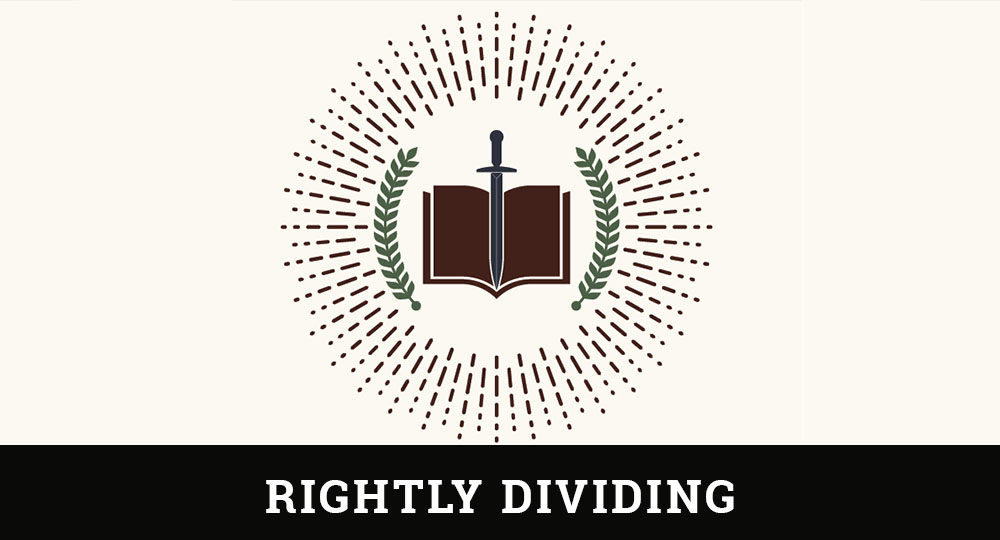
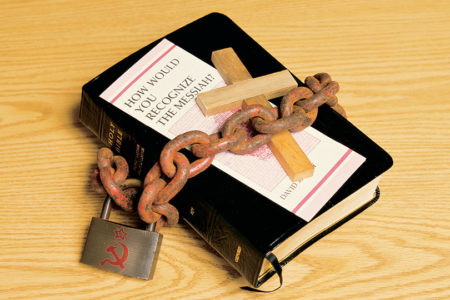
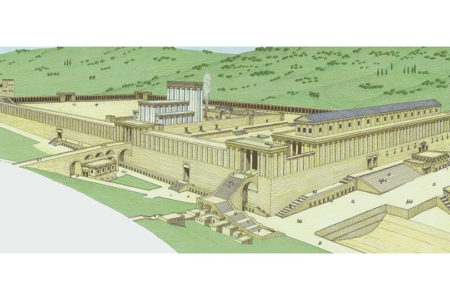
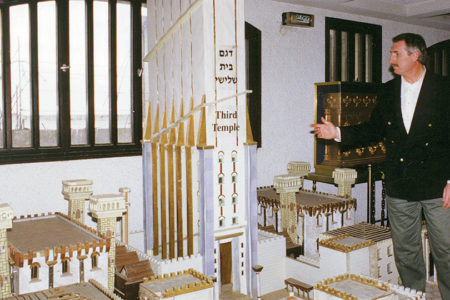

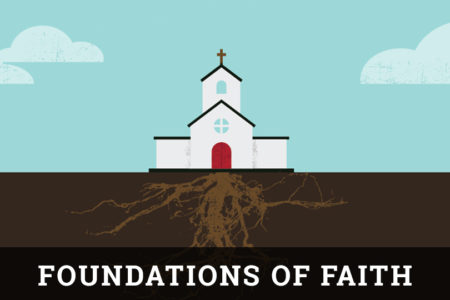


Such an enlightening article. I am Christian and was introduced to works of Dr. Arnold Fructenbaun. I am currently working through his Revelation book and workbook. God has certainly blessed us through the expertise of wonderful Jewish evangelists. Thank you for your effort and ability to teach. I am truly grateful! Eugenia Cochran, Greenwood, South Carolina
since this article was written a number of groups have renounced the Protestant reformation and reconciled with the so-called “mother church”. Yet the Roman catholic church isn’t a Christian entity but a satanic entity. The Lutheran church many years ago, in fact not long after this article was written, reconciled and reunited. Today, denominations like the Methodists have joined in union on beliefs like evolution standing in opposition to Gopd’s word. Counterfeit religious cults like seventh day adventism have come into union with the rcc. Counterfeit religions like mormonism and islam are being courted by the vatican, all in preparation for the coming one-world religion. Believers need to pray for strength and refuse to compromise the standards of Scripture. God established the principle of sola Scriptura for a very applicable reason.